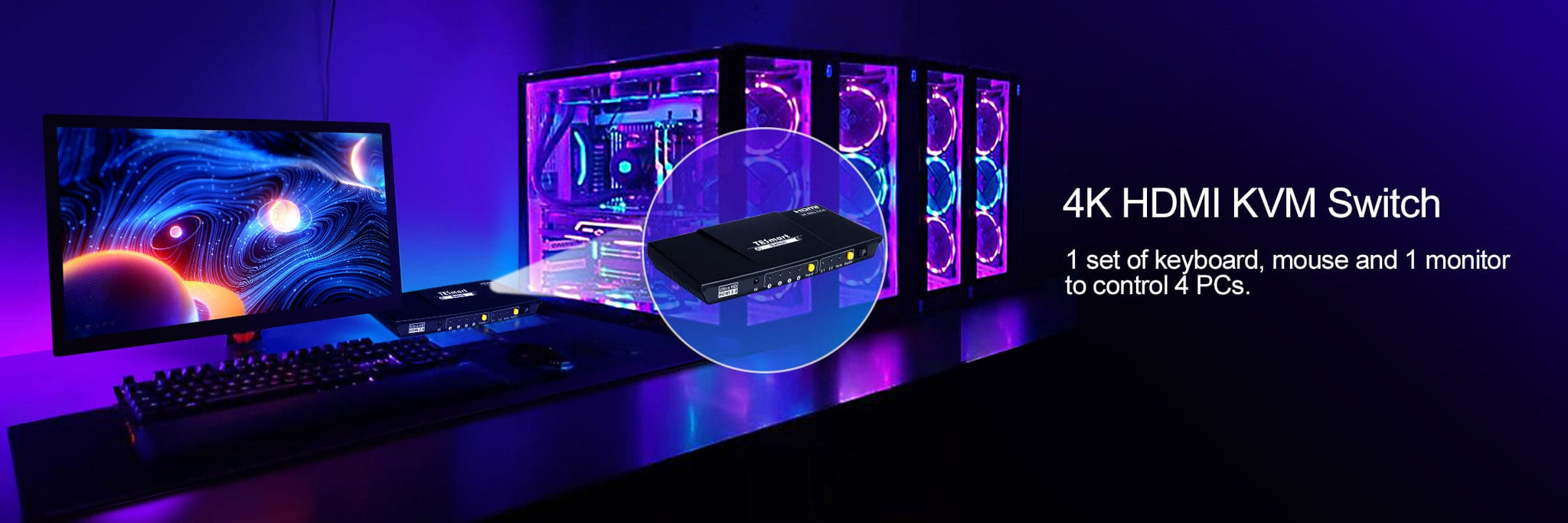What is a KVM?
KVM switches allow users to control multiple computers from one or more sets of keyboards, video monitors, and mice. KVMs can greatly increase your efficiency, keep your computers secure, and reduce workstation desktop clutter - all of these benefits, unless the KVM you choose does not support the features required by today's users.

The ability to manage HDCP is one of the key features that is rare to find on KVM solutions.
Although not common in KVM environments, HDCP touches many parts of our world and is a technology that your next KVM system will need to master, no doubt about it! The alternative is to severely limit the interoperability of your business systems in your network.
What is HDCP?
In a nutshell, HDCP – which stands for High Bandwidth Digital Content Protect – is a form of digital copy protection to prevent copying of digital audio and video content. Although it was developed by Intel Corporation, one of the everyday uses for HDCP is to prevent the illegal copying or distribution of Hollywood blockbusters.
To play HDCP enabled content, each and every manufacturer must obtain a license, pay an annual fee and work to very specific conditions. Each HDCP capable device is protected with a set of forty 56-bit HDCP keys and on top of that, a special value is created for each of the forty keys. Every pixel is encrypted and the keys are updated on every frame.
If everything works seamlessly, you will never even realize that HDCP is even being used – but when the technology bites back you will struggle to connect your sources to your screen. Chances are that you will encounter this pain at some point by experiencing “snow” or a black screen, even if you are not trying to watch encrypted content. These issues are so prevalent that HDCP causes many calls to the Pro Audio-Visual industry customer support teams.
How do I manage HDCP?
One option end-users have occasionally used in the past was to (illegally) strip the HDCP from their signal or to downgrade the HDCP version applied. There are a number of commercially available solutions to strip your HDCP, but the downside is that you will likely face a court case and huge fines if you are caught using it to pirate HDCP protected material!
The only real option is to choose a system that handles HDCP correctly. This has not been a prevalent issue with KVM systems in the past, but now sources being connected to KVM systems connected over IP are not just office PC’s, causing a new issue to grasp with.
When do I need HDCP on my KVM?
KVM systems normally will be found in control room installations – the ability to view any PC from any workstation while keeping the actual PC hardware safe, secure and cool in a rack room is a key benefit. Aside from being able to choose the PC you want to connect to, unit’s also possible to show images on a large monitoring wall as well as at the desktop.
Even in this controlled environment, you may want to connect in HDCP enabled devices:
Satellite news – Broadcasters keep the public informed 24 hours a day, 7 days a week. Together, these news outlets cater for every geography and aim to deliver immediate and compelling news at every hour of the day. It’s obvious that a news feed should be a key component of every major control room. There is a challenge when using many satellite or cable broadcasters as their feeds are protected using HDCP. So, if you want the very best quality news feeds from major broadcasters, you need a KVM that is HDCP compatible.
Your boss! – Imagine this: your CEO turns up in your corporate environment or control room and wants to connect their device to your system so they can make a presentation to the gathered team. The device of choice in this case is a Macbook Pro which is connected to the system and no image is seen on the big screen – why? Of course we already know the answer – it is because their Mac uses HDCP.
Creatives - It is not only in corporate environments Mac’s will be seen. They are also prevalent in the broadcast facilities where many a creative won’t be seen dead using a PC!





